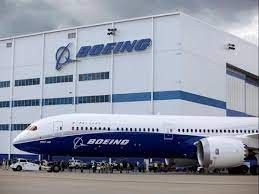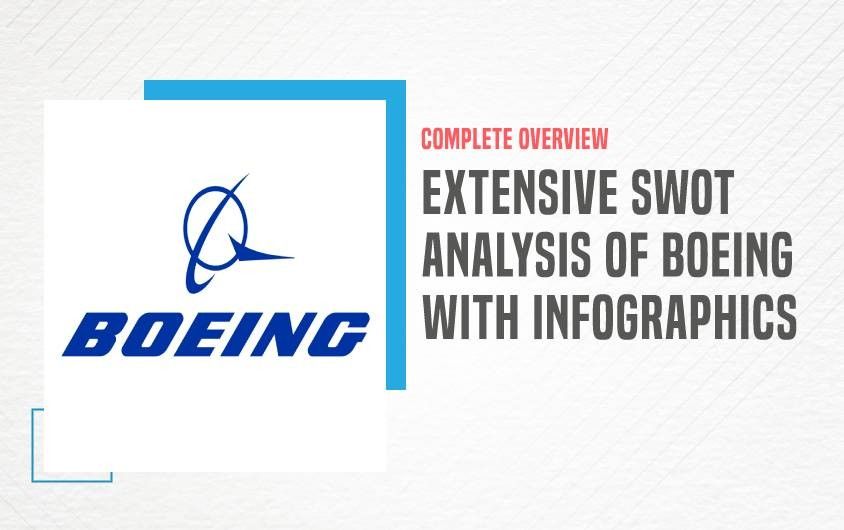About Boeing
Boeing may be a giant within the Aircraft designing and manufacturing Industry and is engaged within the manufacturing of aircraft, satellites, defence weapons and knowledge and communication systems. The corporation also provides performance-based logistics to the commercial airline industry worldwide.
In 1916, American timber entrepreneur William E. Boeing formed Aero Products Company in Seattle, Washington, which became the Boeing Company. He and Conrad Westervelt constructed the “B&W” seaplane shortly before then. In 1917, the firm was renamed Boeing Airplane Company, and William Boeing established Boeing Airplane & Transport Corporation in 1928.

Boeing started corporate in 1916. Initially, they sold only aeroplanes to the United States Navy, but slowly the corporation expanded into other markets and introduced new products. Their headquarters are located in Chicago.
The company has recorded strong growth in revenue and operating margin from the past two years and has been renowned for its efficiency in operations. Commercial Airplanes, Defense, Space & Security, and Boeing Global Services are the three business units that makeup Boeing.
Quick Stats on Boeing
| Founder |
William E. Boeing |
| Year Founded |
1916 |
| Origin |
Chicago, Illinois, United States |
| No. of Employees |
141,014 |
| Company Type |
Public |
| Market Cap |
$121.67 Billion (2021) |
| Annual Revenue |
$56.16 Billion (2020) |
| Net Profit |
$-11.94 Billion (2020) |
Products by Boeing
Following are the products we can find at Boeing –
- Commercial and Military aircraft
- Satellites
- Weapons
- Electronic and Defense systems
- Launch systems
- Advanced information and Communication systems
- Performance-based logistics and training.
Competitors of Boeing
Following are the top competitors of Boeing –
- Raytheon Technologies
- Lockheed Martin
- Northrop Grumman
- General Dynamics
- SpaceX
SWOT Analysis of Boeing

SWOT analysis may be a technique for assessing four aspects of a business – strengths, weaknesses, opportunities and threats. SWOT Analysis also helps an organization or a brand to strategise according to the factors affecting its growth.
1. Strengths of Boeing
Strength is that the quality that distinguishes from the opposite competitors given below –
- Strong Market Position: Boeing is one of the most important aerospace companies within the world and maybe a leading manufacturer of defence, space and security systems; and commercial aeroplanes. A robust market position helps Boeing achieve economies of scale and improves the company’s brand image.
- Strong Research and Development: Boeing has a strong focus on research and development, particularly in its engineering, operations, and technology (EOT) efforts. Boeing’s R&D contributes to the company’s ability to develop its product range and services while also retaining its market position.
- Expansion of merchandise and sustainable fuels: Boeing is continuously enhancing its line to satisfy customer needs. Boeing has also been specializing in sustainable fuels that help in reducing emissions and are hence environmentally friendly.
- Highly Innovative: The aircraft manufacturer is the foremost innovative player within the industry and sets the standards for the rest to follow.Widest Variety: Boeing caters to a good sort of customer needs from airlines to corporate jets, and little personal jets. Any customer who wants a plane can catch on from Boeing and may not be turned away or mentioned by Airbus.
- Strategic Partners: during a technology-intensive industry, success depends on the number of partners and also on their technological prowess. Boeing has partnered with innovation.
2. Weaknesses of Boeing
Weaknesses are the internal elements that put the company at a disadvantage. Let’s take a glance at some points given below-
- Labour issues: Boeing has approximately 38 per cent of its total workforce as a neighbourhood of a labour union which causes work stoppages from time to time. This affects productivity and hence delivery on time becomes a haul. This also affects a relationship with the purchasers.
- Higher Dependency on US Government contracts: The US government forms a significant neighbourhood of Boeing’s total sales. In FY 2015, it formed about 27% of the entire sales. But long-term government contracts are subject to varied political and economic factors and hence over-dependency on our government are often a threatening factor.
- Flawed and Unsafe Design: In 2019, Boeing 737 Max crashed twice within the Java Sea and Ethiopia killing all aboard. Both planes suffered an equivalent malfunction attributed to a flaw in Boeing’s design of the 737 Max. Boeing’s flawed and unsafe design of 737 may be a major weakness.
- Over-Outsourcing: Boeing outsources the manufacturing of many of its planes’ components and parts. Spirit Airlines recently let off 2800 employees who worked mostly on the faulty 737 Max, highlighting the scope of Boeing’s outsourcing.
- Supply Chain Issues: Boeing, like any other global operator, has many supply chain issues as a result of its management practices. This is a big flaw, especially for Boeing, which is largely reliant on suppliers.
3. Opportunities for Boeing
Opportunities are potential areas for a corporation to specialise in to enhance results, increase sales, and ultimately profit. So let see what sort of opportunities are there –
- Increasing demand for commercial aeroplanes: With increasing globalisation and thus the need to connect, Passenger numbers are growing and hence a requirement for brand fresh commercial planes are also on the high.
- Growing aerospace and defence market: The aerospace and defence market is increasing globally and therefore the market is predicted to grow furthermore at a CAGR of three for 2015-18. This provides great opportunities for the company to boost up revenue within the longer term.
- Strategic expansion: Boeing has previously associated with various companies like General Electric, Lockheed Martin, Raytheon, etc. for brand spanking new projects. To cater to the expansion in orders, Boeing must expand. Flying Cars: For instance, Boeing partnered with Volkswagen(Porsche) to form flying cars for the super-rich.
- More Eco-Friendly Planes: To contribute to global efforts to combat environmental pollution and action, Boeing began a mission to reduce the carbon footprint of its planes. It’s testing the latest cutting-edge technologies to lower emissions and noise pollution.

4. Threats to Boeing
Threats are the environmental factors which can forbid a company’s expansion the next are the points given below-
- Intense competition altogether categories: Boeing faces strong competition in all its categories from many global companies worldwide. This erodes the market share for Boeing.
- Fixed Priced Contracts: About 72 per cent of Boeing’s revenue was generated from its BDS business which follows fixed-price contracts. While this helps in improving efficiencies and price reductions, it also risks the corporation to lower margins, which affects the financials of the corporation.
- The Pandemic: With the devastation, pain, and deaths thanks to the pandemic, most people would consider it before boarding a plane.
- Looming Recession: Countries across the earth are already deep into recession. Boeing’s commercial customers (for example, Southwest airlines) will struggle to stay afloat in times of economic condition as consumers avoid non-essential travels or seek cheaper options like trains and buses.
- Terrorist Attack: The threat posed by terror groups hangs over all airlines as well as aeroplane manufacturers.
- Trade War: Airbus and Boeing are both caught in the centre of the UCS-EU trade tussle.Cyber Security Threats: Currently, cyber-attacks by rogue nations, terrorists, and cybercriminals pose a significant threat to airlines globally.
With this, we conclude the case study on the SWOT Analysis of Boeing. In the next section, we will summarise what we read so far.










